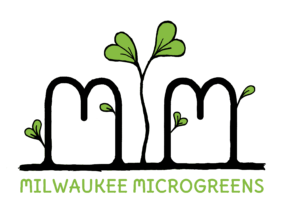
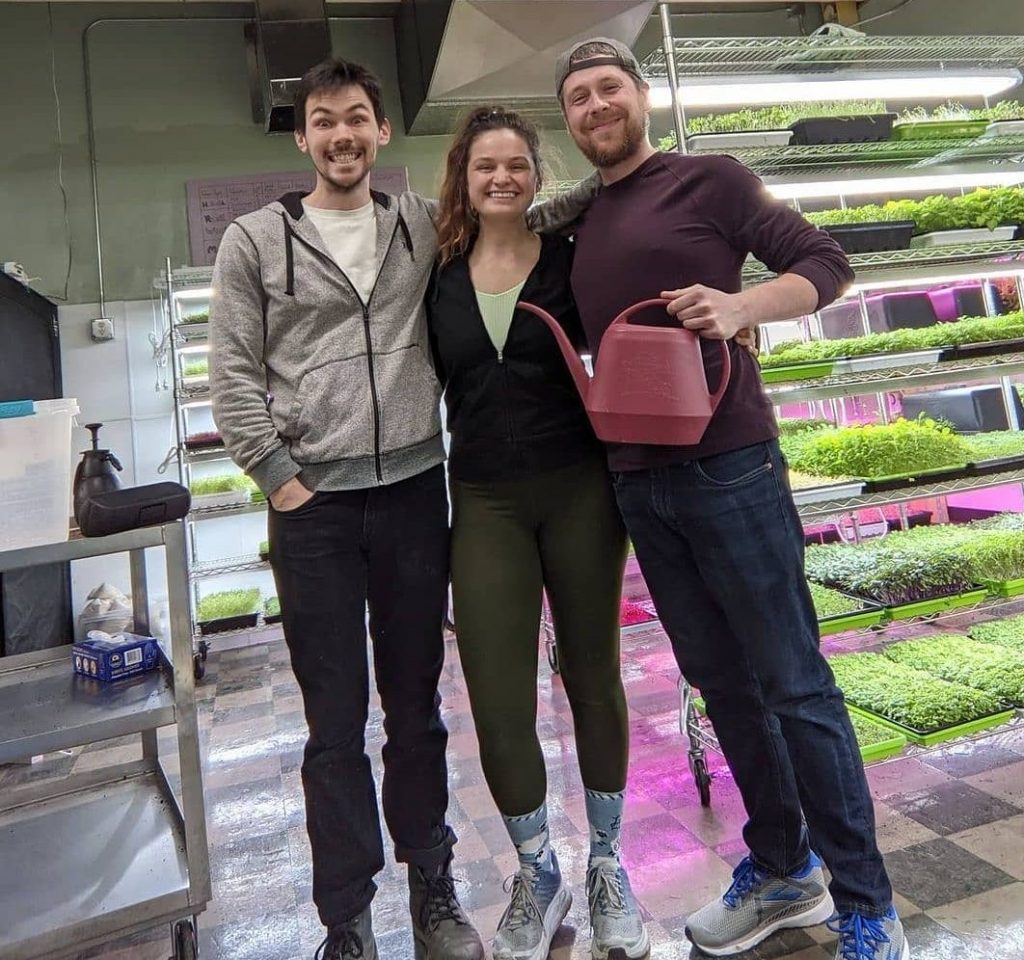
Written by Hippo (a hippopotamus) and Al (a bird)
“Oh, Al,” I lamented. “I am in a bad way. Ever since we visited Milwaukee Microgreens (MM), I contemplate breaking into their warehouse at night and gorging on pea shoots; I dream of ransacking the place and stuffing myself with tender, juicy, heavenly leek, cantaloupe, and sunflower microgreens. And then my dream turns into a nightmare when they catch me with greens hanging out of my mouth. They just look at me, shaking their heads. ‘I thought you were our friend,’ says Patrick, and they all turn away. Oh Al, what am I going to do?”
“That’s terrible, Hippo!” squawked Al. “But I think you are doing remarkably well considering the circumstances – although you have been drooling in your sleep more than usual which is a lot. Still, what hippo would not dream of feasting on all those trays of young shoots? However, what we are going to do now is write the story.
Hmmm Hwwoooooosh – That’s me taking a deep breath.
One big change is coming soon.
“A machine,” said Al, “that is being funded by a City of Milwaukee grant for using abandoned space. The machine will mix the growing medium, fill the trays, and plant the seeds with little human help! Patrick says it will be something like take ‘n bake food – trays all ready to go – just add water! It will take 70 to 80% less time to do all this work.
“Leaving more time for them to bask in the river,” I said dreamily.
Patrick led us down the hallway, possibly down (or up) some stairs, and opened a door.
“That’s when your mouth fell open,” said Al.
“And that’s when all the fore-mentioned trouble began,” I moaned, “because this is the room where the sprouts turn into luscious, mouthwatering, delectable microgreens. I barely stayed on two legs as tray after tray on shelf after shelf called me to gobble them all up. And they wouldn’t stop calling! If not for you, Al, hissing in my ear, I would have done it. I would have eaten up the entire room. I mean just put yourself in my hooves – a hippo far, far from her home – in a dark, cold season of a place called Wisconsin – without the tender grasses of her native land. I had no idea how hungry I was until I entered that room. I know Patrick was talking because I heard a voice, but I have no idea what he said.”
“He told us about the lights,” said Al. “All of the plants had lights, but some had different colors to help them grow better. And Patrick showed us the rack that he used when he first started this experiment in his spare bedroom.”
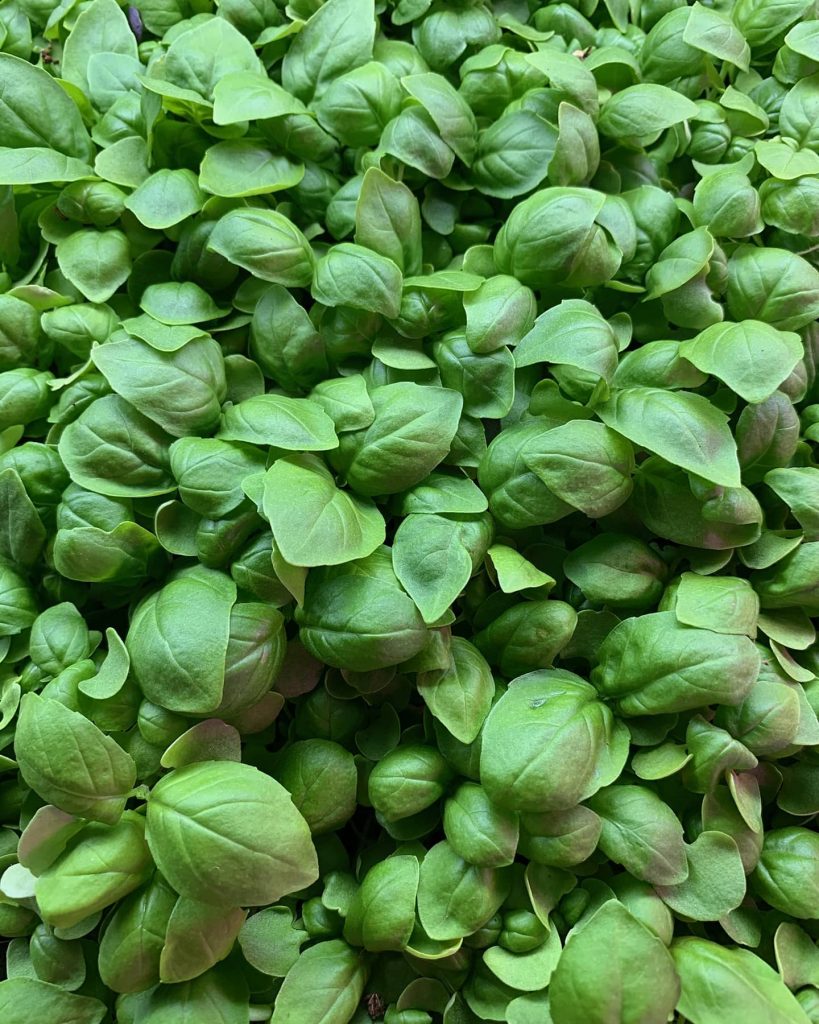
Cinnamon Basil, Yum! 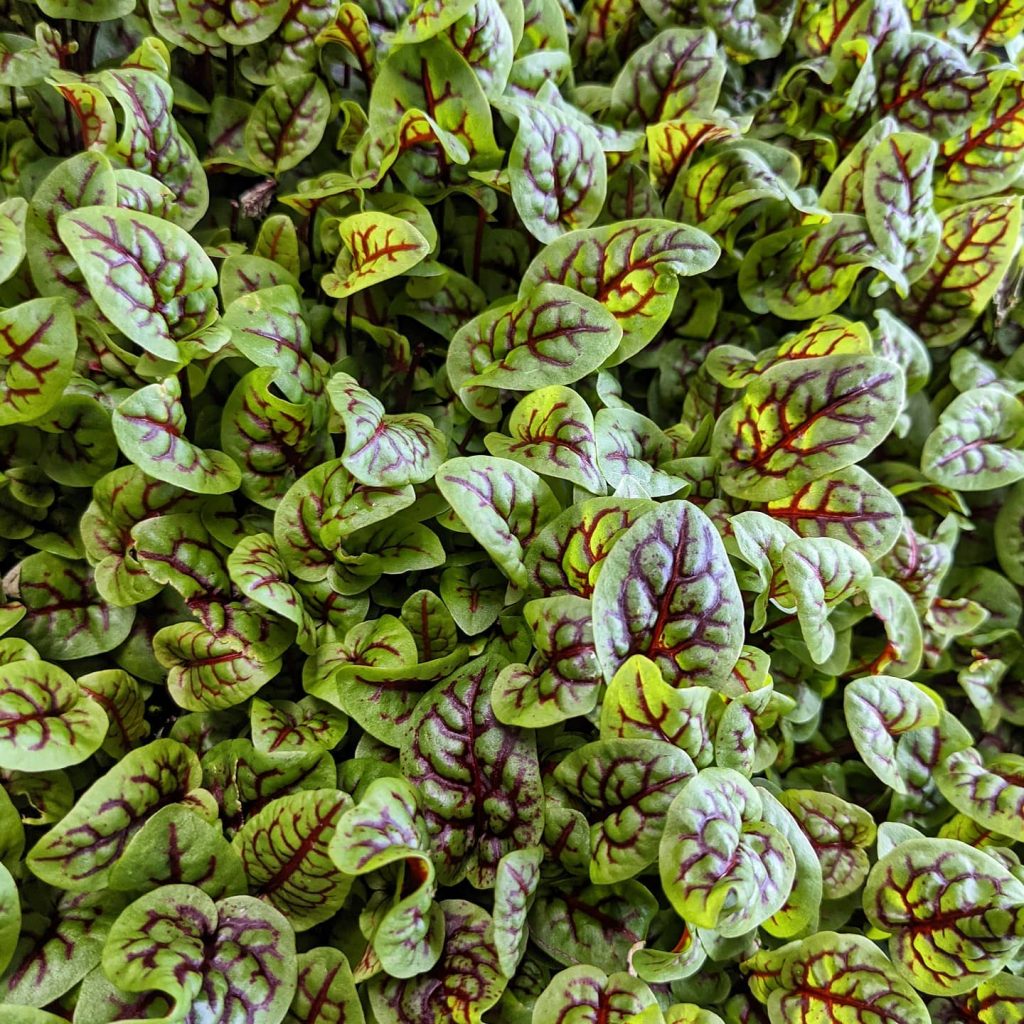
Red-veined sorrel, Yum! 
Yum, yum! 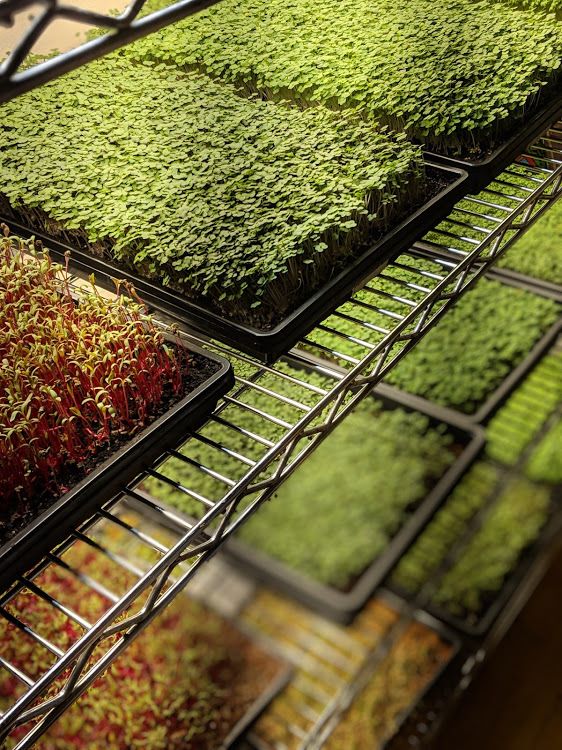
Yum! 
Hello Beautiful Amaranth
I manage pretty well in the spring and summer on the grass and other forage in my neighborhood. I eat as much as possible because, for one thing, it’s free. (Actually, it’s a great mutualistic relationship: I mow the grass for my neighbors and they pay me.) But most of the grass in my neighborhood is of one particular type. I’m not complaining, but when you eat 80 or so pounds every night, you want something different. Milwaukee Microgreens has variety – leek, pea, radish, broccoli, carrot, sunflower, parsley, cantelope, cilantro, beet . . . I like all the different colors and leaf shapes, but what really has me hooked is the flavors. Some are bitter, some taste earthy; they can be peppery or mild, tangy or grassy sweet. I discovered that a variety of microgreens keeps me healthy. Guess where I spend my lawn-mowing money!
This time last year, Al and I were living the high life, eating and drinking too much in restaurants.
“That was you, Hippo. I just came along to keep you out of trouble. Not much good it did,” Al said.
Well, they were very good restaurants for humans, but not so much for hippos. I would always order three or four extra large salads (whatever I could afford that day) but they gave me what I would call bite-size portions. I couldn’t fill up, so I ate lots and lots of bread and butter, chips and salsa, and leftovers from other tables. I believe that this, along with the cold and dark, caused me to fall into the doldrums. It didn’t help that my once beautiful complexion became what I could only call crusty.
“I remember,” said Al. “I had to write the entire article on essential oils myself.”
“I know,” I said. “I didn’t feel like doing anything.”
This year, I am coping much better and believe it is the subtraction of bread, butter, and chips, and the addition of something much more appropriate to a hippo – fresh microgreens of many varieties. Of course, it’s not natural for a hippo to be living in Milwaukee, Wisconsin, but here I am and one must try to adapt. By consuming a mixture of foraged grasses and microgreens, I believe I am coming as close as I can under the circumstances to my natural diet on the savanna. Humans take note: We’ve learned that everybody is happiest when their conditions are closest to the conditions in which they evolved.
We believe that microgreens might help humans with their many maladies as much as they have helped me. Not only do microgreens have all sorts of vitamins, minerals, enzymes, and phytochemicals (often in much greater concentration than in the mature plant) needed by humans , but they also have something called prebiotic fiber. This sounded crazy to me at first, but it seems that both hippos and humans . . .
“And birds!” squawked Al . . .
. . . have micro-organisms (mostly bacteria) living inside their guts that need to be fed. The prebiotic fiber is their food and here’s the really interesting part – these creatures (if they are creatures) help us stay out of the doldrums AND (for humans) the hospital. Who would have guessed!
The discovery of prebiotic fibers as a main nutritional source for human bowel flora, I believe, is among the most important health discoveries of the last 20 years. The recognition that the intestinal microbiome has nutritional needs distinct from that of their Homo sapiens host is a huge finding, on a par with such things as the internal combustion engine or the recognition of iodine deficiency as the cause for goiters and hypothyroidism.
Dr. William Davis
. . . by obtaining prebiotic fibers, we are trying to mimic the behavior of primitive humans who dig in the dirt with sticks, stones, or bone fragments and consume the roots and tubers they uncover, sometimes raw, sometimes roasted on a stick over a fire.
“Once again, take note! Everybody is happier and healthier when their conditions are closest to those in which they evolved.”
Where can you get Milwaukee Microgreens microgreens?
I get my MM microgreens (plus carrots, beets, potatoes, sweet potatoes, squash, lettuce, and other products from local farms and small, local businesses) delivered to the door on Wednesdays and Sundays through Milwaukee Farmers United. You just place your order online and they show up with microgreens and any other stuff that you ordered.
“I’m hoping if there are enough requests, they will start offering ticks,” said Al.
If your order is at least $30, delivery is free.
Milwaukee Microgreens also supplies some of the best restaurants and chefs in town: White House Restaurant in Bay View, Cloud Red, Tavolino, Paloma Taco and Tequila, Flour Girl and Flame, Tall Guy and a Grill, Interval Cafe, Mountain Top Coffee, Cafe Manna, Triciclo Peru, Maxie’s, Story Hill BKC, Vocado MKE, and Chef Dana Landis.
“Just look how fancy the microgreens make everything look!” squawked Al.

Flour Girl and Flame 
Triciclo Peru 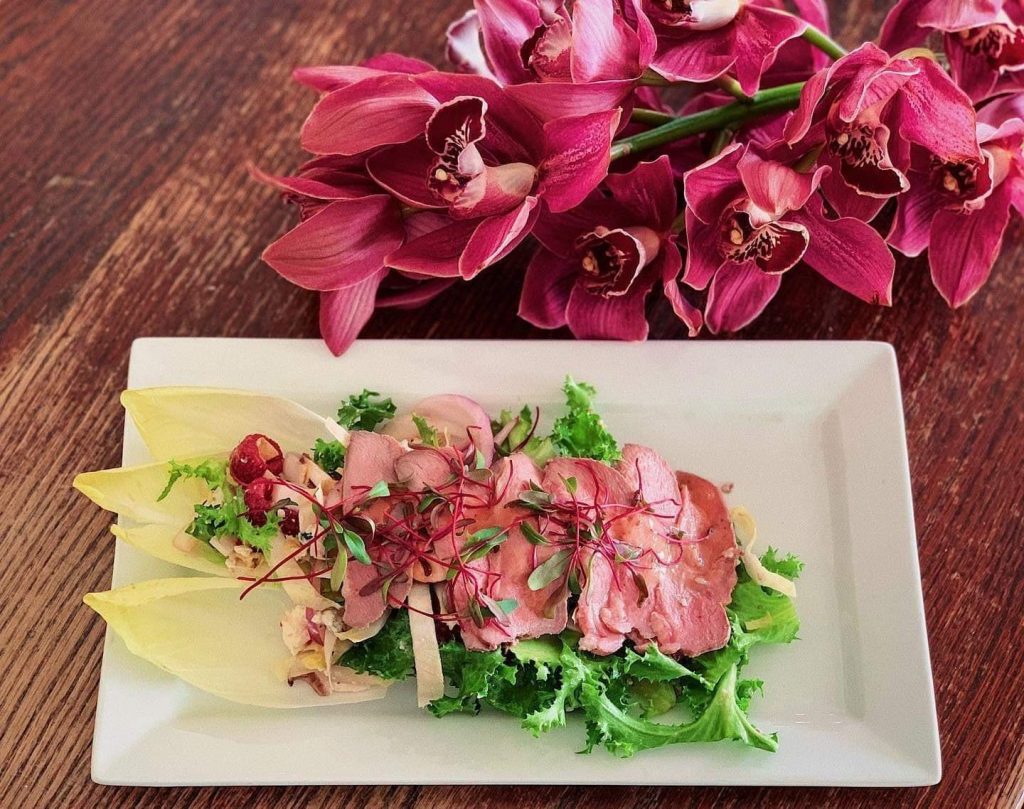
White House Restaurant 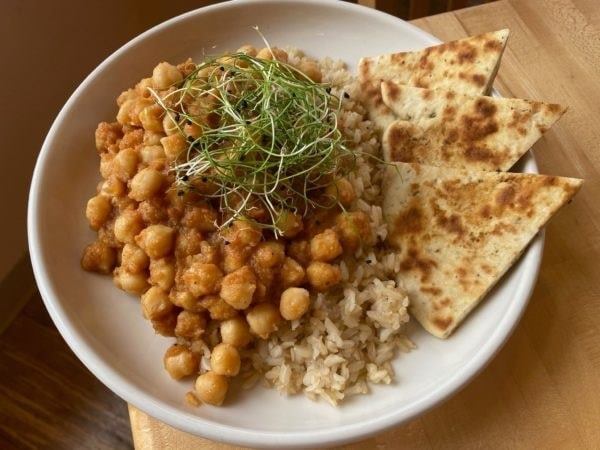
Cafe Manna 
Cloud Red Restaurant 
Vocado MKE 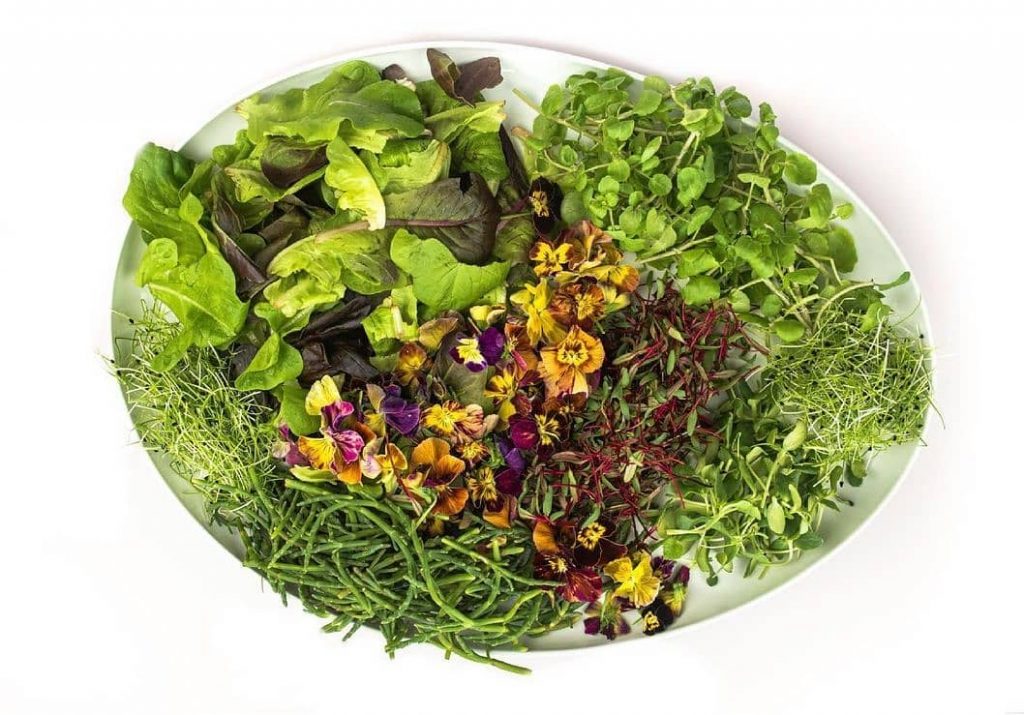
A Salad Fit for a Hippo, but not nearly large enough
Chef Dana Landis
“Tell them they can grow these at home, too,” said Al.
“That’s true,” I said.
As we mentioned, Milwaukee Microgreens started out in a spare bedroom, serving friends and family. You don’t need the big machine and special lights – just some seeds and soil, and a nice window. Al and I are going to try this to bring our food expenses down.
Thank you!
During this season of giving, Al and I would like to give thanks to the humans at Milwaukee Microgreens for supplying locally grown microgreens to a hippo in great need as well as to all the humans in the area. We would like to thank all the humans who buy local foods, strengthening our community and contributing to a healthier Earth for all its inhabitants. And we would like to thank the restaurants and chefs for using locally grown ingredients to create magnificent dishes as well as new connections in the local food web.
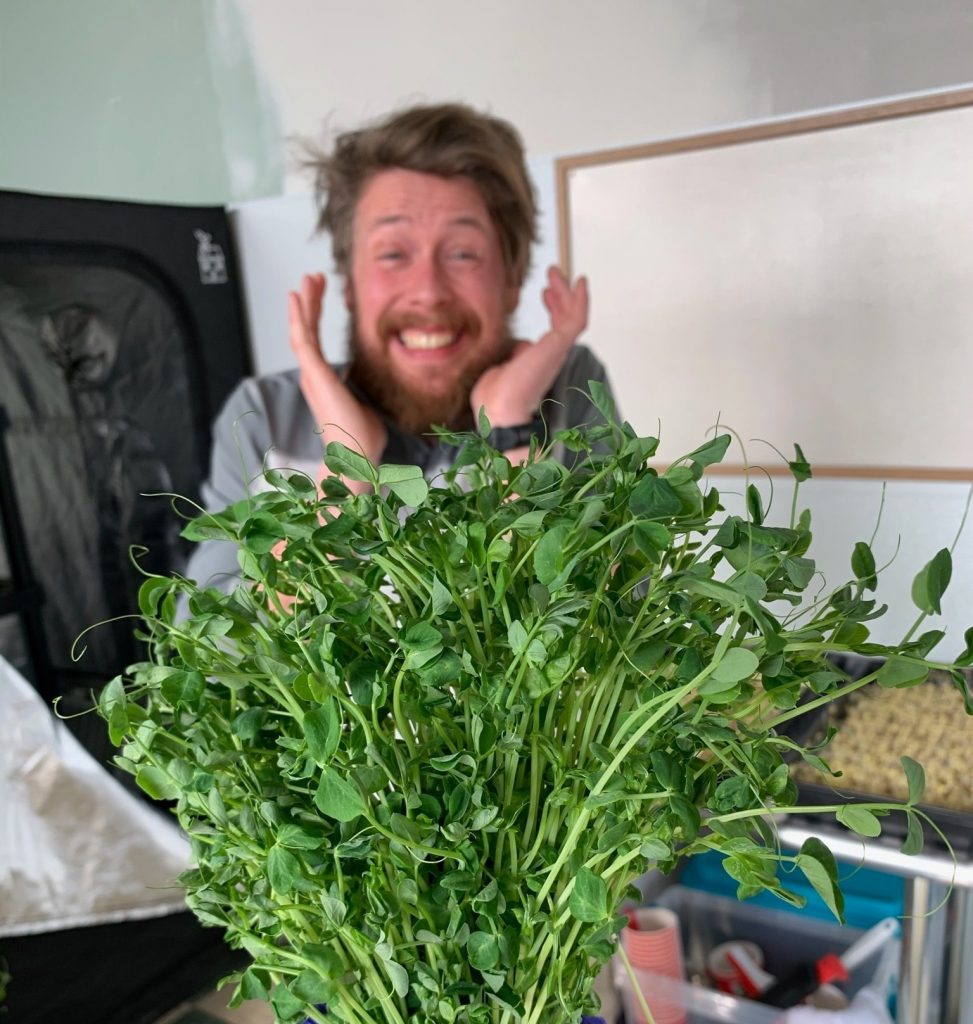
“Don’t forget LotFotl ,” said Al.
How could I, Al? Thank you, thank you, thank you to LotFotl (Living Off the Fat of the Land), the Community Supported Agriculture Farm in Elkorn, Wisconsin that inspired Patrick Darrough to leave the corporate world and start on this new and maybe kindof scary path. Patrick brought his best friend, Erik, and girlfriend, Shannon, on board. And so it goes, one connection at a time.
“You know, Al, I’m glad they have each other. I never would have had the courage to leave our life on the savanna without you.”
“Nor I without you, Hippo.”
Order your Milwaukee Microgreens and other local food items here: Milwaukee Farmers United. Tell them Hippo and Al sent you.
Have you read The True Adventures of Hippo and Al yet? It’s an exciting tale filled with undercover disguises, menacing giants, and feats of great bravery . . . “by me,” said Al – “the bravery part, that is.” Read it here.

